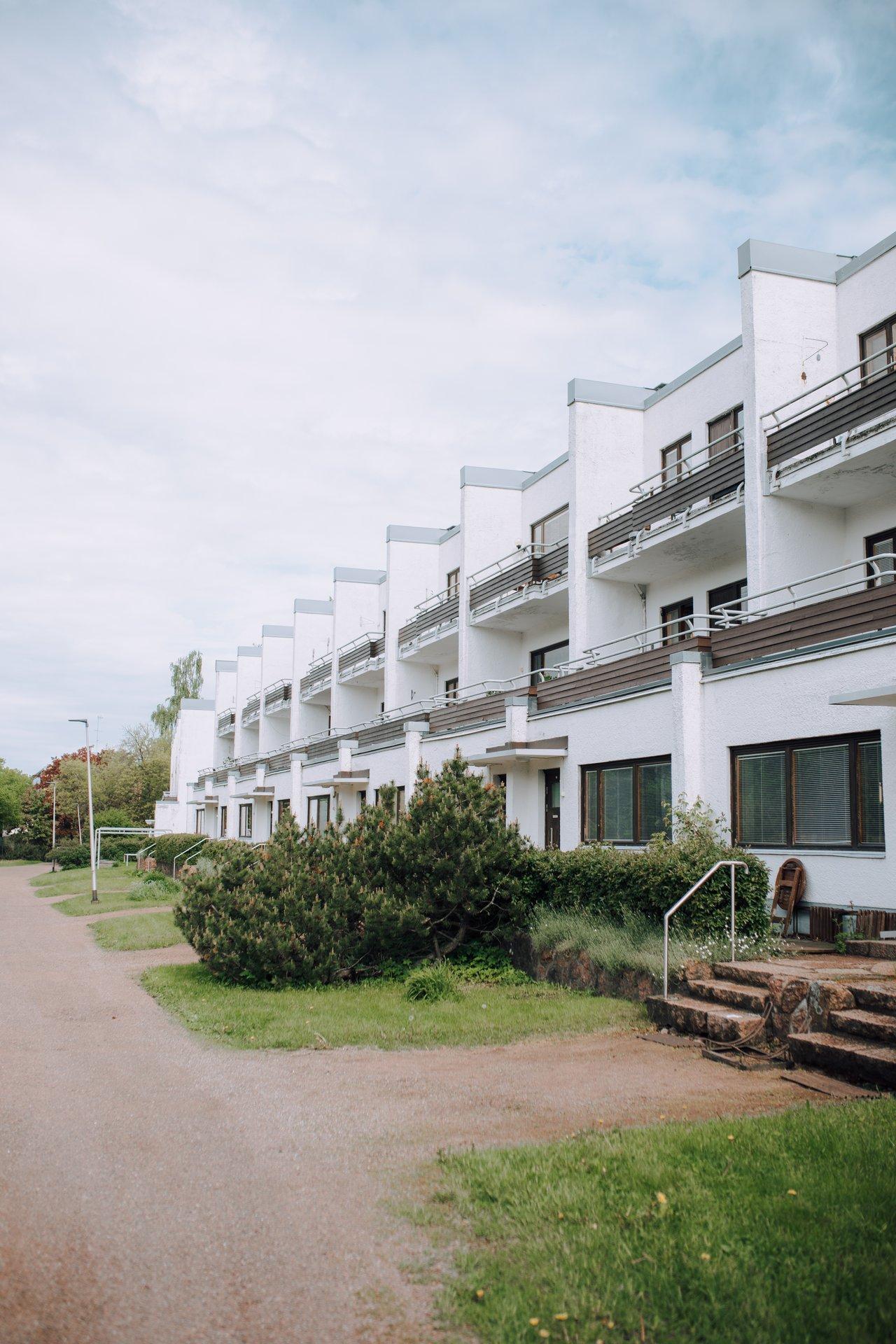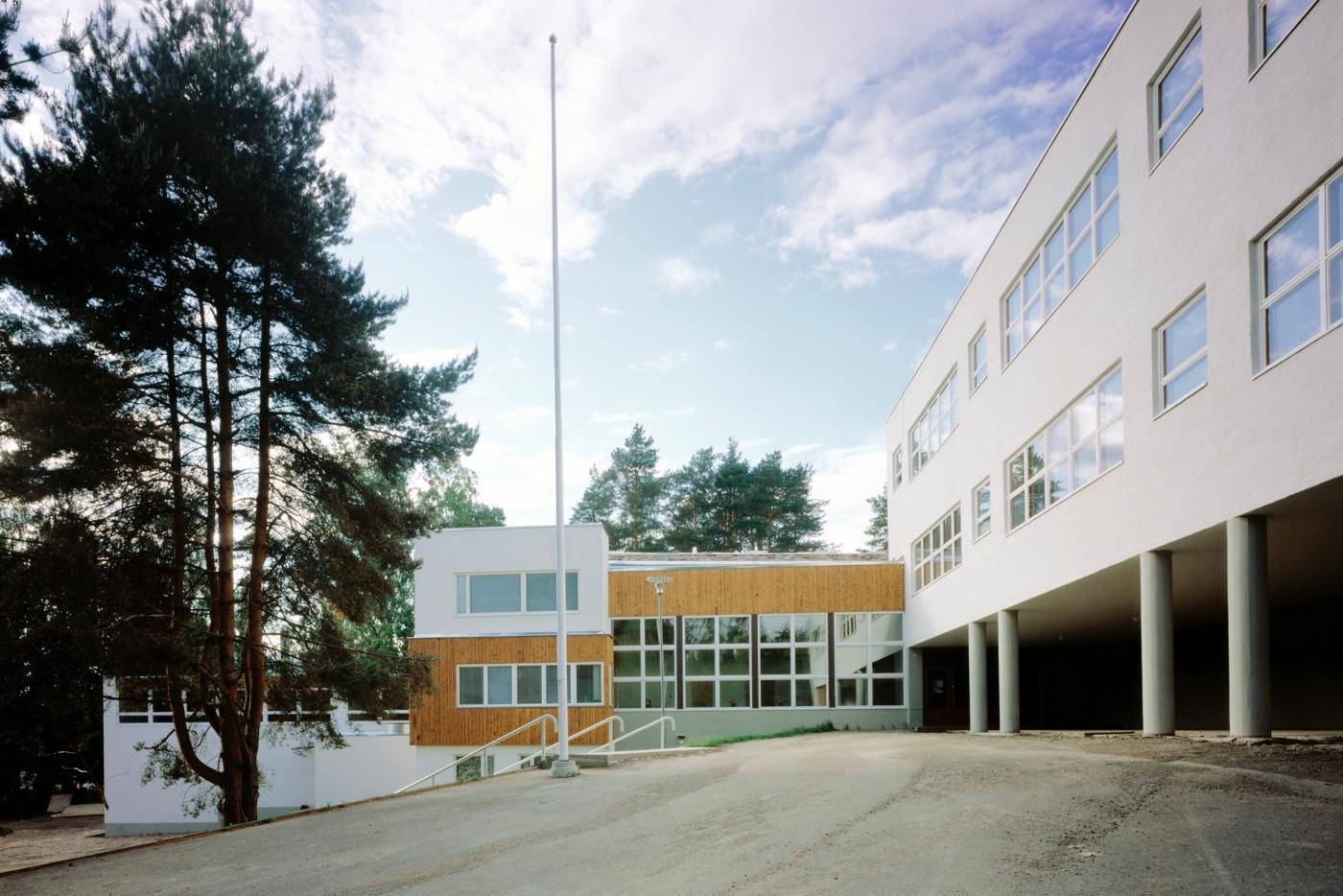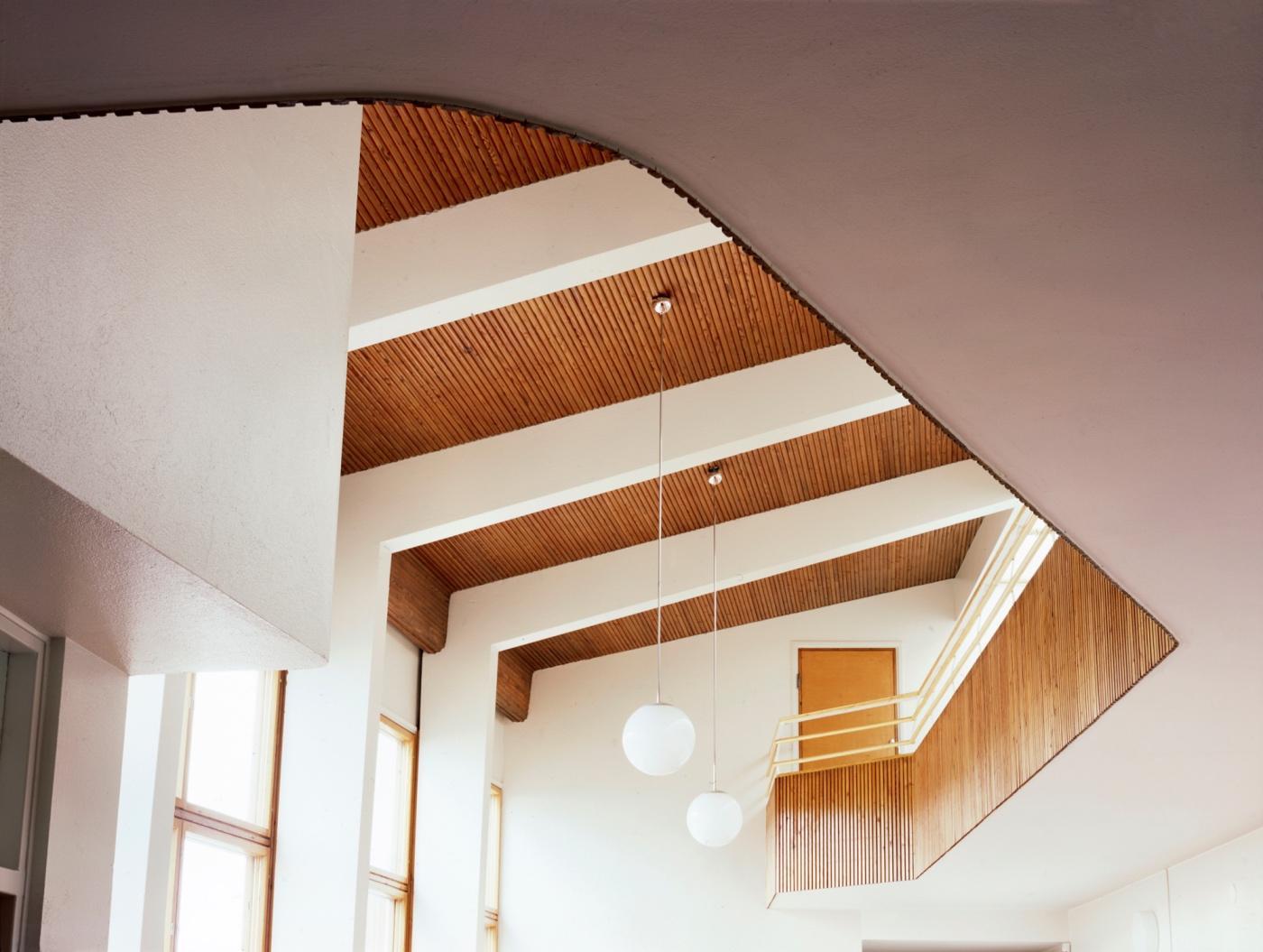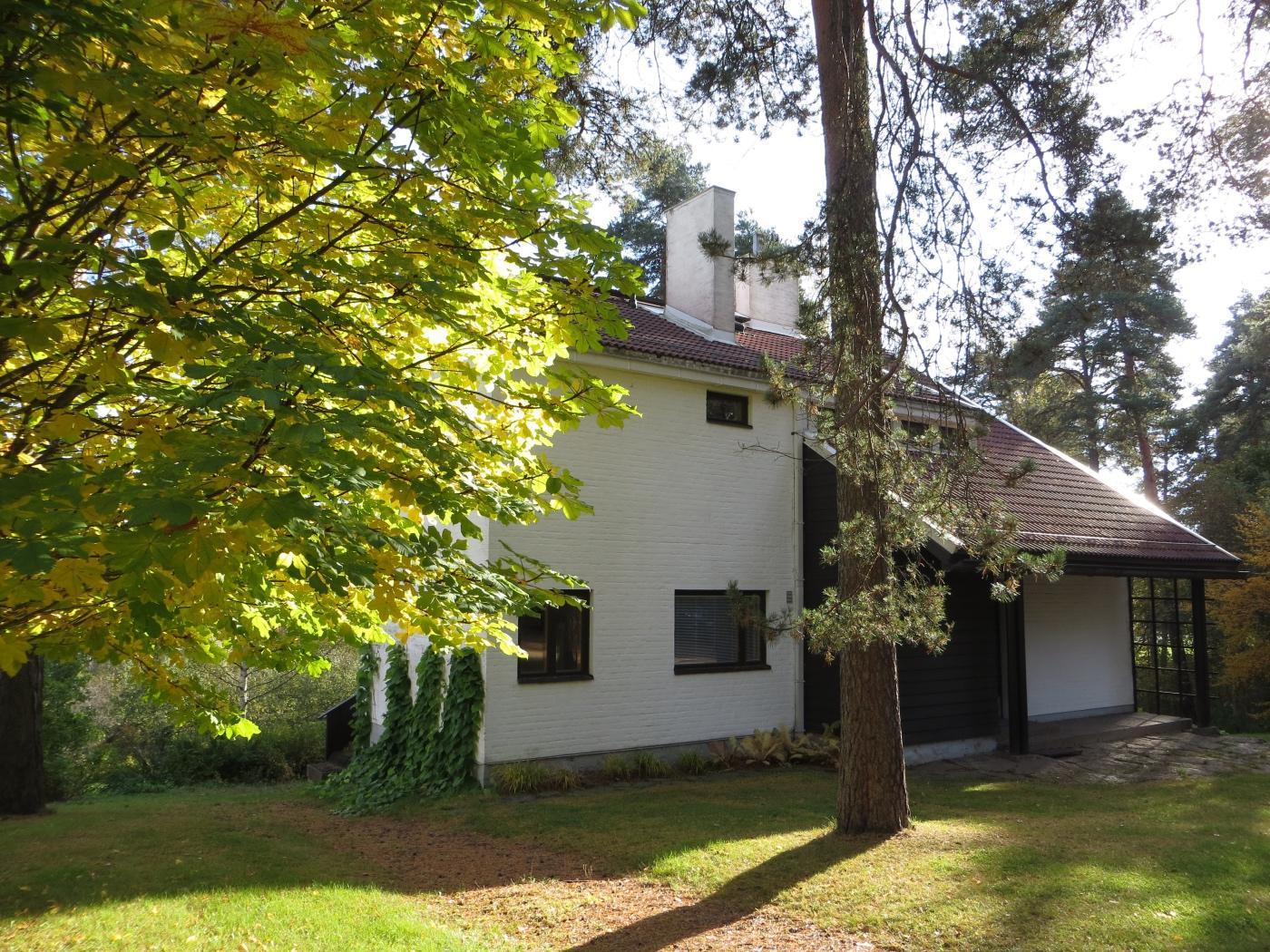Kymenlaakso is the single region in Finland with the most buildings designed by Alvar Aalto. If Jyväskylä is called the Aalto capital, Kymenlaakso can rightly be called the Aalto region. In total, Kymenlaakso has dozens of buildings designed by Alvar Aalto: detached houses, apartment buildings and blocks of flats, as well as industrial plants.
On the cycle route you can discover Alvar Aalto’s architecture of the 1930s-1950s in Karhula, Sunila, Hamina and Inkeroinen.
Most of the buildings designed by Alvar Aalto were placed freely in the landscape, taking into account the shapes of the terrain. As a result, the connection to nature is a natural continuum for the views of the houses and apartments. Nature, light and their connection to the dwellings were important to Aalto. The overall architectural approach and the typical elements of Aalto’s formal language are repeated in all the Aalto projects in Kymenlaakso.
Aalto succeeded in adapting his buildings to nature and adding both creativity and artistry to their austere simplicity, and even today people are still attracted to Aalto buildings.
A tourist interested in architecture, history and design can easily spend several days exploring the buildings designed by Alvar Aalto, but also stay overnight in apartments designed and decorated in his style.
There are 4 areas on this route with buildings designed by Aalto:
Inkeroinen factory area
The buildings designed by Alvar Aalto for the Inkeroinen Factory Hill were completed between 1937 and 1956. The complex consists of factory buildings, semi-detached houses on the Rantalinja, terraced houses on the Tervalinja, three detached houses, three blocks of flats, a school on the Tehtaanmäki and detached houses on the Karhunkangas.
Hamina Petkele residential area
In Hamina, you can discover the environment of the Summa paper mill designed by Alvar Aalto and the housing designed by him for the paper mill workers and management in the Petkele residential area.
Apartment buildings in Karhula
Alvar Aalto’s design in Karhula is represented by the apartment buildings completed on Karhunkatu between 1945 and 1947, known as the ‘tennis houses’.
Sunila factory and working-class housing area
Alvar Aalto’s handiwork is immediately recognisable from the moment you arrive in the extensive and coherent residential area. The factory, completed in 1938, and the adjacent residential area, originally built between 1937 and 1939, form a whole whose design clearly shows the influence of Alvar Aalto’s 1930s modernism.
For more details and directions see the route in Outdoor Active
By Visit Kotka-Hamina



